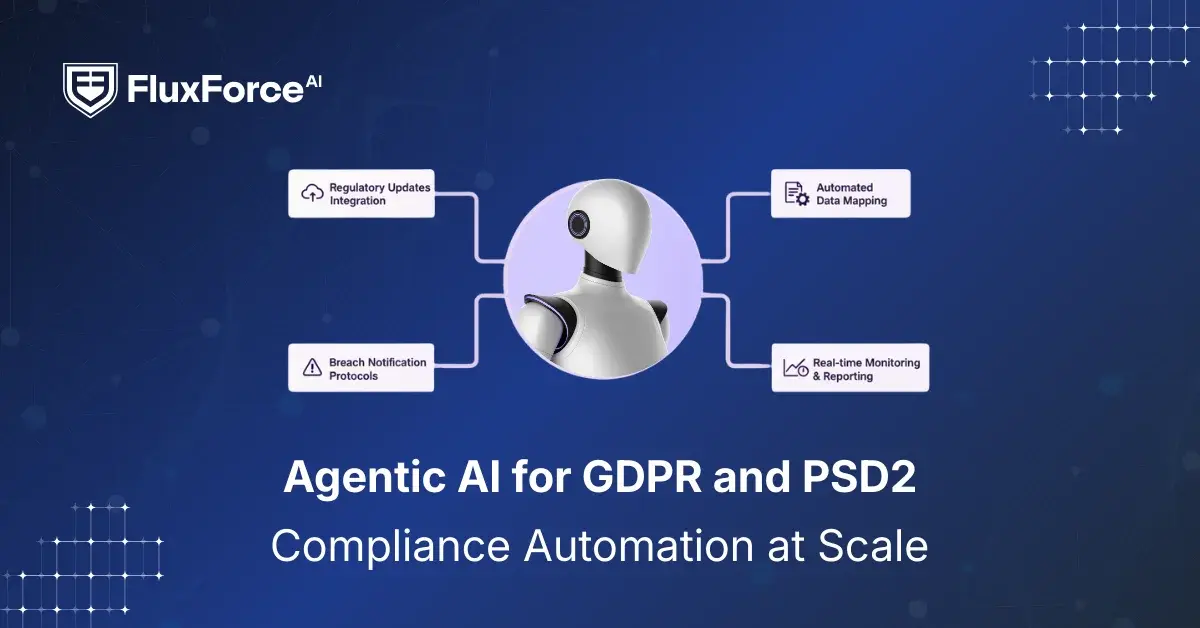Listen to our podcast 🎧

Introduction
Cross-border trade is a powerful driver of economic growth, yet it also brings complex compliance challenges, especially in high-risk global supply chains. Navigating diverse regulations across countries demands precision, as even a single lapse can result in heavy penalties and reputational damage.
For financial leaders and trade compliance managers, ensuring that every shipment, payment, and transaction meets both local and international standards is no longer feasible through manual processes alone.
The rise of AI and automation is transforming compliance management by improving accuracy and efficiency. Still, companies must understand that these tools require careful implementation and human oversight to deliver sustainable results.
In this blog, we examine core strategies businesses should adopt to strengthen compliance management and ensure resilience in complex, high-risk cross-border operations.
What is Cross-Border Trade Compliance?
Cross-border compliance for businesses refers to adhering to laws and regulations throughout the movement of goods and services between countries. It requires businesses to follow the specific rules of both the exporting and importing nations.
With every cross-border transaction, companies must ensure they meet the key requirements, which include:
- Customs regulations – Meeting import and export clearance requirements.
- Tariffs – Paying applicable duties and charges.
- Taxes – Complying with local and international tax rules.
- Documentation – Providing accurate shipping, licensing, and compliance paperwork.
Key Cross-Border Trade Compliance Considerations for Global Business

Trading across borders involves meeting varied laws and requirements, which companies must follow, as non-compliance can lead to serious consequences. Here is a checklist of what cross-border considerations should be made when conducting business:
1. Understanding Compliance Requirements: Every jurisdiction has unique import and export regulations. Companies must remain updated on these rules to avoid errors that could result in penalties or halted shipments.2. Obtaining Documents for Authentication: Certificates, licenses, and approvals often require validation by authorities. Proper authentication ensures seamless customs clearance, legal recognition, and smoother international trade transactions.
3. Taxation & Tariffs: Correct application of duties, tariffs, and taxes prevents both overpayment and underpayment. Accurate calculation supports compliance while maintaining cost competitiveness in global markets.
4. HS Codes Labelling: Harmonized Systemstr (HS) Codes classify goods for customs. Accurate coding ensures correct tariff application, reduces clearance delays, and prevents compliance violations during international shipments.
5. Sanctions and Restricted Parties: Companies must screen all cross-border sales against restricted party lists. Engaging sanctioned entities exposes businesses to severe financial and legal consequences.
6. Preparing Detailed Documents for Audits: Maintaining comprehensive trade records supports compliance audits. Proper documentation provides proof of lawful operations and minimizes regulatory risks.
-1.png?width=1200&height=628&name=hubspot%20blog%20(6)-1.png)
Shaping the Future of AI in Finance
Fluxforce research uncovers how banks and enterprises are adapting to fraud, compliance, and data challenges in 2025.
Why Manual Compliance Processes Fail in High-Risk Supply Chains
Modern supply chains demand speed, accuracy and real-time visibility, especially in sectors like medical, defence, or electronics. Using manual compliance processes exposes companies to serious risks that directly affect operations and profitability.
- Suppliers get updates on shipments days later instead of instantly due to spreadsheets and paperwork. This lag creates blind spots in tracking sensitive goods.
- Documentation errors become common when forms are filled manually, leading to customs delays, compliance violations, and financial penalties.
- Regulatory changes are missed because manual systems cannot keep pace with evolving trade laws, exposing companies to non-compliance.
- Audit readiness suffers as paper trails are incomplete or inconsistent, leaving organizations vulnerable to investigations or contract losses.
- Risk detection is delayed since manual checks rarely identify restricted parties or embargoed items on time, increasing exposure to legal action.
- Scaling operations becomes impossible when compliance depends on human intervention, slowing down growth in high-demand markets.
How Automation Transforms Cross-Border Trade Compliance Management

Leveraging automated trading compliance software allows companies to adapt to evolving regulations with greater speed and reliability. Instead of manually checking hundreds of documents and requirements, automation streamlines compliance workflows.
1. Managing Constant Regulatory Updates
From country-to-country, trade rules change frequently. Staying updated against those rules manually is difficult. Automation delivers real-time updates and applies them directly to customs filings, ensuring shipments comply with the latest requirements.
2. Automating Regulatory Reporting in International Logistics
Manual reporting delays the movement of supply chains. Automated systems extract data from trade documents instantly to prepare and submit required compliance reports on time. This eliminates delays and helps companies avoid penalties.
3. Centralizing Data for Faster Verification
Automation consolidates documents, licenses, and trade records into one platform. Teams verify information instantly, prevent duplication, and close compliance gaps before they escalate.
4. Streamlining Duties, Tariffs, and Tax Calculations
Automation calculates updated duties and taxes with precision. This ensures businesses avoid overpayment, prevent underpayment penalties, and maintain compliance with local and international tax requirements.
Advancing Capabilities with AI and Machine Learning in Trade Compliance Automation
Combining AI-powered models with automation in global trade compliance accelerates workflows and handles tasks that traditionally require human intelligence. Here are key areas where AI technologies enhance cross border business compliance.
1. Tracking Regulations with Blockchain Integration
Using blockchain for cross-border regulatory compliance tracking enables companies to record and verify regulatory data across jurisdictions in real-time. With this practice, companies gain transparent, tamper-proof records that simplify audits and ensure compliance.
2. Screening Against Sanctioned and Restricted Parties
AI-powered systems scan large volumes of trade activity against sanction lists in real time. They detect restricted entities instantly, prevent unlawful transactions, and protect businesses from severe penalties.
3. Predicting Supply Chain Risks with Analytics
Machine learning models analyse trade data to detect potential disruptions. Companies anticipate compliance risks early, act proactively, and prevent costly interruptions in global supply chains.
4. Automating Classification and Documentation
AI tools classify goods with the correct HS Codes and validate supporting documents. This prevents misclassification, ensures proper tariffs, and eliminates manual errors in customs filings.
.png?width=1200&height=628&name=hubspot%20blog%20(3).png)
Shaping the Future of AI in Finance
Fluxforce research uncovers how banks and enterprises are adapting to fraud, compliance, and data challenges in 2025.
Proven Automation Strategies for Trade Compliance Managers in High-Risk Supply Chains

In high-risk supply chains, managing compliance becomes more complex due to industry-specific laws and sensitive data. Compliance managers must adopt effective automation strategies to strengthen oversight and remain compliant. These include:
Using Trade Compliance Software for Supply Chain Risk Management
Trade compliance software automates major supply chain workflows such as partner screening, shipment checks, and regulatory monitoring. It reduces manual workload, flags potential risks early, and ensures consistent adherence to international regulations.
Automating HS Code Classification
Two out of every five tariff codes tested are wrong in supply chains. Companies must use automated systems to assign correct HS Codes to goods. This ensures accurate tariff application, prevents misclassification penalties, and reduces costly customs delays.
Decommissioning Manual Regulatory Reporting
Rather than taking days for regulatory reporting, automation generates and submits compliance reports in minutes. It also ensures accurate filings, reduces the risk of non-compliance, and ensures businesses meet strict deadlines in sensitive supply chains.
Screening Against Sanctions and Restricted Party in Real-Time
Automated tools scan transactions against global sanctions and restricted party lists in real time. This prevents unauthorized dealings, protects against severe penalties, and maintains legal compliance across jurisdictions.
Deploying Pre-Built Reg-Tech Solutions
Pre-built Reg-Tech tools integrate easily with existing systems and automate compliance tasks from the start. Leading companies use these AI-driven models to boost efficiency, lower costs, and support compliance officers in promptly responding to regulatory changes.
Conclusion
With rising geopolitical tensions and increased regulatory scrutiny, adopting automation solutions is no longer optional for global businesses. Automation and AI-powered technologies are capable of managing high-risk supply chains, including sensitive sectors such as medical equipment and defence.
Compliance managers, especially those operating in e-commerce, must implement these systems strategically. Any failure in data handling or compliance processes can lead to severe financial and legal consequences.
To reduce these risks, organizations can rely on pre-built AI models developed by licensed providers such as QServices. These solutions ensure regulatory accuracy, reduce operational burdens, and allow companies to focus on profitability while maintaining compliance standards.


.webp)



Share this article